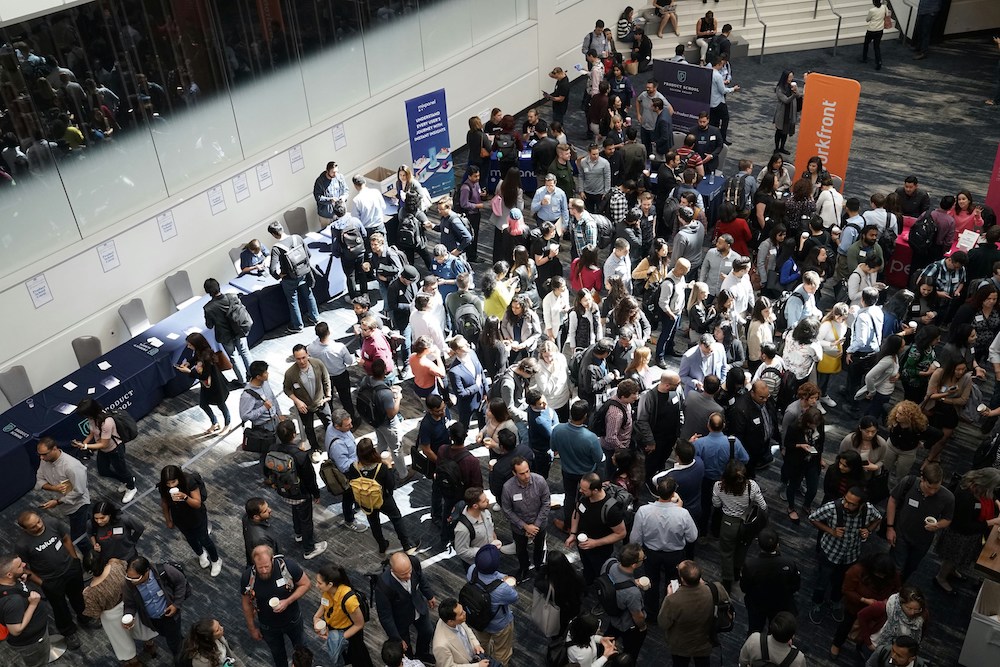Planners predict more bookings, bigger events, and a surge in tech-savvy gatherings
The US meetings and events industry is experiencing a period of robust growth and dynamic change, fueled by a strong performance in 2024 and evolving planner preferences. Two recent industry reports, “2025 State of the Meetings Industry” by Cendyn and ConferenceDirect and “Meetings Industry Trends: Q4 and Year-End 2024 Results” by Knowland, shed light on key trends and predictions for the year ahead.
2024: A Year of Growth and Shifting Trends
Knowland’s data reveals that the US meetings and events market experienced notable growth in 2024, with significant activity observed across various sectors. The Charities/Non-Profits sector led the way, leveraging conferences to expand their influence and collaboration networks. The Technology sector also displayed robust growth, driven by increased demand for conferences and seminars focusing on innovation and digital transformation. Meanwhile, the Healthcare sector maintained a strong presence, organizing large-scale events that facilitated knowledge sharing and advancements in medical technology.
In the fourth quarter of 2024, these trends accelerated. Technology continued to dominate, benefiting from end-of-year budget allocations that drove last-minute event planning and execution. The Accounting and Staffing/Employment sectors showed considerable improvements, capitalizing on year-end networking opportunities and strategic planning sessions.
Overall, the corporate segment held a strong grip on the market, controlling approximately 63% of meeting demand in both Q4 and the full year 2024. The SMERF (Social, Military, Educational, Religious, Fraternal) segment also experienced growth, capturing 15.5% of the market, while association demand dwindled.
Optimism for 2025
Looking ahead to 2025, planners are optimistic. Approximately 41% expect an increase in bookings, with 29.1% forecasting growth of up to 10% and 12.4% projecting a boost of 20% or above. This positive outlook is further reinforced by the anticipation of higher attendee counts. About 65% of planners expect an increase in attendees, with 40.7% forecasting growth of up to 10%, 18.5% forecasting growth between 11% and 20%, and 5.6% projecting a boost of over 20%.
While smaller meetings still dominate, there’s a noticeable shift towards medium and large-sized events. Meetings with 100 to 250 attendees represented 35.8% of all bookings in 2024, while events with over 500 attendees accounted for 32.4%. This trend shows an equalizing shift between smaller and larger events, emphasizing the need for hoteliers to improve services and amenities tailored to diverse group sizes.
Evolving Planner Preferences
Rising costs remain a top concern for planners, leading to increased interest in secondary markets. In fact, 90% of planners are considering secondary markets as cost-saving alternatives without compromising event quality. This shift presents opportunities for secondary and tertiary markets to attract new business by offering quality products, services, and attractive pricing alternatives compared with the top 25 market destinations.
Planners are also prioritizing advanced A/V support and technology-enabled features in event spaces. In fact, 60.21% of planners place a high priority on advanced A/V support in RFP responses. Digital proposals are also gaining popularity, with over 51% of planners preferring them for their efficiency and clarity.
Sustainability is another key focus, with 37% of planners prioritizing waste reduction and recycling and 34% prioritizing sustainable food and beverage options. To meet these expectations, venues should focus on robust waste management and offering environmentally friendly catering options.
Meeting the Needs of a Dynamic Market
To thrive in this evolving landscape, hoteliers and venues need to adapt to the changing needs of meeting planners. This includes:
Investing in technology: Offer advanced A/V capabilities, digital proposals, and technology-enabled features in event spaces.
Embracing sustainable practices: Highlight eco-friendly practices, waste reduction initiatives, and sustainable F&B options.
Offering flexible solutions: Be prepared to address budget constraints with creative solutions and transparent pricing.
Promoting offerings in secondary markets: Leverage the growing interest in secondary markets by showcasing unique offerings and competitive pricing.
Prioritizing personalized communication: Address the unique needs of each planner and provide timely and efficient communication throughout the planning process.
Any thoughts, opinions, or news? Please share them with me at vince@meetingsevents.com.
Photo by Product School on Unsplash





